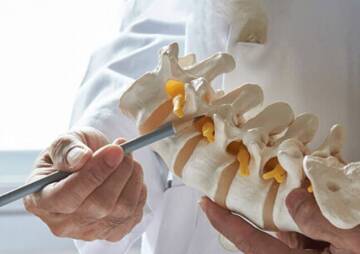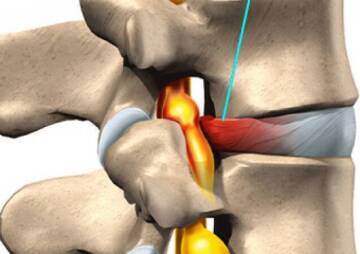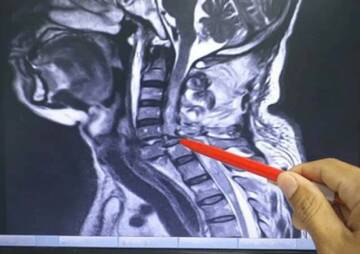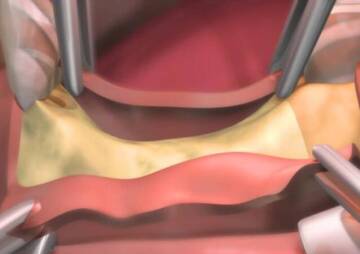-
kitengo
Craniomaxillofacial Surgery
Orthopedic Surgery
Spine Surgery
Orthopedic Implants
Hip Surgery
Knee Surgery
Pectus Excavatum
Bone Graft
Disinfectants
Healthcare
Spinal Surgery Risks: Is It Worth It?

When people hear the word “surgery,” the first thing that comes to mind is the risks and the after-effects of it.
When people hear the word “surgery,” the first thing that comes to mind is the risks and the after-effects of it. Undergoing a surgery can be a frightening experience for the patient, but thanks to modern technology and modern techniques, the risks and complications are far more lesser than what it used to be years back. Spinal surgery, or back surgery, holds its risks and complications as well. the main and the most important risk is the risk of paralysis as the surgery is done very close to the nerves of the spine.
Back surgery has benefits for the patients as well. For example, the patient can move freely without pain, becomes physically fit, the mood changes and he or she is no longer in the state of pain, and the intake of painkillers can be reduced, or in some cases, stopped. However, the complications are still there.
Complications of spine surgery
If any complications occur during the spine surgery, it is very serious as the surgery is done close to the spine and the spinal cord. Some of the complications can be the need for additional surgeries, which is not so beneficial to the patient. The patient has to bear the pain, while it is considered to be some sort of financial loss. Not all the patients can afford to go for a second surgery after the first one. The complications must be discussed with the respective doctor before the surgery, in order for the patient to prepare mentally and physically, as well as financially.
Complications such as hemorrhage, which means bleeding, occurs and the patient loses a lot of blood. DVT, or better known as blood clots, are another form of complication. To be added, there are some situations where the risk of the complications increases during the surgery, such as: heart disease, hypertension, high blood pressure, stroke, bleeding disorder, obesity, smoking, abuse of alcohol and illegal drugs, and diabetes.
Another type of complications is the complication of lumber spine surgery. This surgery aims at improving the symptoms like persistent pain and the numbness in the legs, which is caused by the pressure in the nerves.
The Complications of Lumber Surgery
The complications of lumber surgery are as follows:
Facial sores and loss of vision: During the lumber decompression, the face of the patient is positioned downwards. The patient is resting on their forehead and chin during the surgery. It has been seen in some cases that a red sore develops on the forehead, but there is nothing to worry about as it might fade after some days.
Nerve injury and paralysis: paralysis is not common, but it very serious. The nerve injury and paralysis can be caused by bleeding that occurs inside the spinal column, leakage of spinal fluid, accidental damages caused to the nerves during the surgery, and the accidental damage to the blood vessels.
Death: The risk of death is there in all the surgeries, but it is very rare during and after the lumber surgery. A small blood clot, even a reaction to the anesthetic, and blood loss are the life-threatening factors.
Apart from all these complications that occur during the surgery, there are a few more, such as:
Anesthesia risk (complication): The most common type of anesthesia is the general anesthesia which makes the patient sleep during the process of the surgery. Special machines do the breathing for the patient. In the case of spinal surgery, there is a need for the general anesthesia. Studies show that very few patients have shown reaction towards the general anesthesia, and the complications have been with the patients who had medical issues. To be on the safe side, it is better to explain and tell the doctor about each and every issue and problem that you have. Thus, the doctor will know whether the patient is fit for the surgery and the anesthesia, and the chance of complications.
Thrombophlebitis (blood clots): Thrombophlebitis, better known as blood clot, occurs inside the leg veins. This complication is very common in different types of surgical procedures. When Thrombophlebitis occurrs inside the veins of the legs, it is termed as Deep Venous Thrombosis. The risk of DVT is higher in the surgeries that involve the pelvis as well as the surgeries that involve the lower extremities.
Is there anything to worry about regarding the blood clot? Yes, when the blood clot fills the veins, they stop the normal flow of blood from the legs right back to the heart of teh person. This results in swelling and pain in the affected leg. It is more dangerous if the blood clot is not dissolved, the pain increases and the swelling becomes chronic.
Lung problems: The success of the surgery is seen only if the lung is taken care of after the surgery. Lungs are like sponge, and the small pockets from where the blood receives oxygen are like the holes in the sponge. After the surgery, the patient needs to take several steps to keep the lungs working perfectly. The patient will be encouraged by the nurse to take frequent deep breaths and cough often. Getting out of the bed is an example where the patients allow their lungs to work better. Optimal lung functions can be maintained with the help of the respiratory therapist.
Infection: Infections occur in all type of surgeries, but it occurrs in less than 1% of the spinal surgeries. The infection can be in the outer layer of the skin, which is termed as superficial, or it may be way deeper through the incisions. Compared to the deeper infections, the superficial infections are easier to cure.
To prevent infection, the area of the incision is cleaned nicely and the patient is given antibiotics pre-surgery, especially in cases where bone grafting, metal screw, and plates are used during the surgery. If the surgical wound is hot, red, and swollen and it does not heal, it is surely infected. After all these signs, there comes fever, pain, and the wound may ooze yellow or liquid fluid known as pus. In the worst cases, the surgeon decides to remove the metals and plates from the patient’s body.
Bleeding: Bleeding, like hemophilia which increases the risk of hemorrhaging pre-, during and post-surgery, is also one of the main and dangerous complications that occur during this surgery.
Sexual dysfunction: Damages to the spinal cord of the individual and the areas surrounding the spinal cord can give rise to many problems. The patient may not feel sensation and the nerves of the spinal cord may not pass signals that allow the rest of the body to function. If even one nerve from the spinal cord that connects to the pelvic region is damaged, it will result in sexual dysfunction.
Persistent pain: Some spinal operations fail to reduce the pain of the patient and the common complication after the spinal surgery is that not all the surgeries are successful. In some cases, the patients were complaining from even more pain than what they used to have pre-surgery. Some pain after the surgery is excepted, normal, and common. Nevertheless, if the pain is more and if the patient experiences chronic pain, then the doctor should be informed as soon as possible.
Dural tear: Accidental Dural tear during the spine surgery can have many consequences. The incidences vary depending on the severity of the situation and the tear. The leakage of the cerebrospinal fluid followed by Dural tear can be a serious condition for the patient and can cause issues such as cerebrospinal fluid formation, meningitis, and epidural abscess.
Which method is less risky?
A review of 122 patients who had undergone the lumber surgery shows less blood loss, less complications, significantly less amount of blood transferred, hospitalization of the patient, operation time, and need for further surgery. Hence, lumber surgery is less risky compared to spinal surgery and can be performed without any fear and complications.
A detailed study of the spinal surgery and the risks it holds are presented in Health News Center website. For further details, do feel free to check them out.
References : webmd, umms, oakbendmedcenter, pubmed.ncbi.nlm.nih






